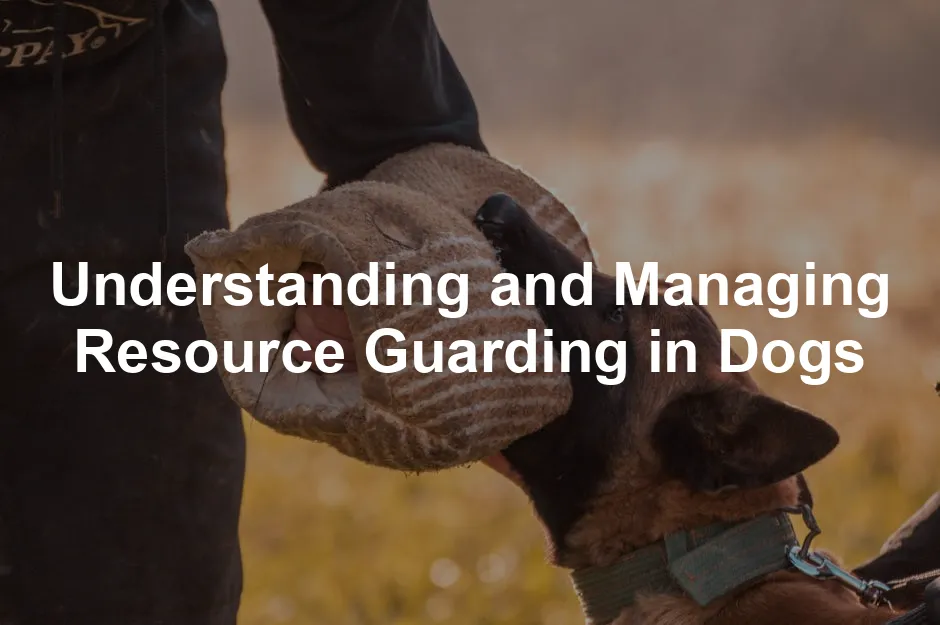Introduction
Resource guarding in dogs is a common issue that many pet owners encounter. This behavior can range from mild to severe, and it often manifests when a dog feels threatened by the presence of others around valuable items. These items can include food, toys, or even personal spaces. Understanding this behavior is crucial for maintaining harmony in a household, especially in homes with multiple pets or children.
In this article, you will learn about the definition of resource guarding, its various causes, and effective management strategies. We will also explore training techniques to help modify this behavior. By understanding the roots of resource guarding, you can ensure the safety and well-being of both your dog and the people around them. After all, a happy dog makes for a happy home!
To keep your furry friend happy and engaged, consider using an Interactive Dog Puzzle Toy. This toy keeps their minds sharp and can help reduce anxiety, making it a great addition to your pet’s playtime routine.
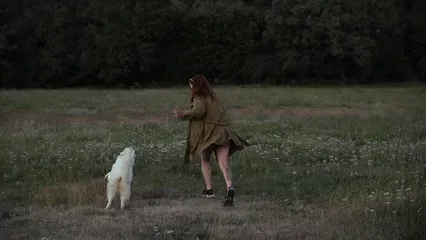
What is Resource Guarding?
Definition and Overview
Resource guarding, often referred to as “possessive aggression,” is a behavior in which dogs react defensively when they perceive a threat to their valued possessions. This can manifest as growling, snapping, or even hiding items to keep them safe. Common items that dogs may guard include food, toys, and even their resting spots.
While resource guarding is a natural instinct rooted in survival, it can lead to conflicts, particularly in multi-pet households. For example, one dog may guard a food bowl while another approaches, resulting in a potential altercation. Understanding this behavior is crucial for dog owners, as it can help prevent escalation and promote a peaceful living environment.
Speaking of food, having a reliable Dog Food Storage Container can prevent your pup from feeling the need to guard their food. It keeps their meals fresh and secure, which is half the battle in resource guarding!
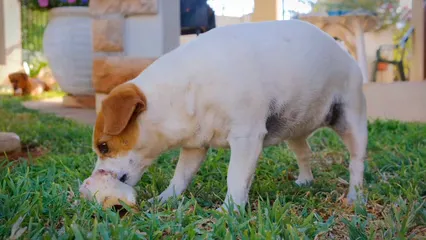
Types of Resource Guarding
Resource guarding can be categorized into three primary types, each with its distinct behaviors:
- Food Guarding: Dogs may exhibit specific behaviors when it comes to food, such as rapidly eating their meals, blocking access to their bowls, or growling when someone approaches. This instinct stems from the need to protect their food source from perceived threats.
- Toy Guarding: When it comes to toys, dogs may react defensively if someone approaches them while they are playing. They might growl, snap, or even run away with the toy to keep it safe. This behavior is often driven by their desire to maintain ownership of something they find enjoyable.
- Space Guarding: Dogs can also guard their resting spots or favorite areas in the home. They may exhibit behaviors like stiffening their bodies, blocking access, or growling if someone tries to approach their designated space. This can be particularly concerning in homes with multiple pets, as it may lead to disputes over territory.
Understanding these various types of resource guarding can help dog owners identify and address the underlying issues effectively. By recognizing these behaviors early on, you can take proactive steps to foster a more peaceful coexistence among your pets.
If you’re looking for ways to keep your dog’s environment enriched and enjoyable, consider investing in some Dog Chew Toys. These can help satisfy their chewing instincts while keeping them occupied and out of trouble!
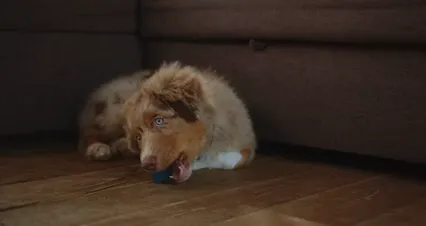
Causes of Resource Guarding
Genetic and Environmental Factors
Resource guarding often starts with genetics. Certain breeds are more prone to guarding behaviors. Breeds like the Rottweiler, German Shepherd, and Staffordshire Bull Terrier can exhibit stronger tendencies to protect their possessions. This isn’t just a random quirk; it’s in their DNA!
But genetics isn’t the whole picture. Environmental factors also play a significant role. Dogs that have faced resource scarcity, such as those in overcrowded shelters or those who have experienced neglect, often develop a heightened need to guard what little they have. Imagine being in a constant state of competition for food—no wonder they get protective! Their instincts tell them to guard, ensuring they can keep their resources safe from others.
A puppy raised in a resource-rich environment, on the other hand, is less likely to develop guarding behaviors. If they learn early on that sharing leads to more goodies, they’re less likely to feel the need to hold on to their treasures like a dragon guarding gold.
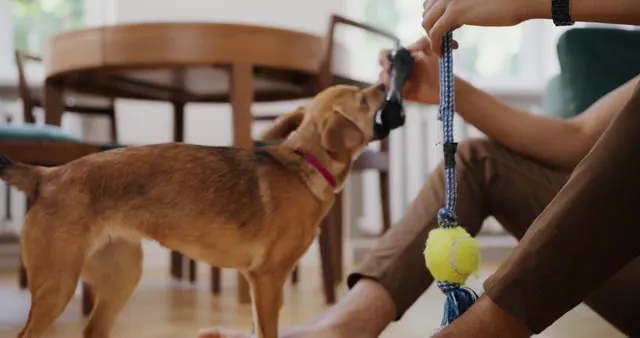
To help your puppy feel secure, consider using Puppy Training Pads during their training. They provide a safe place to relieve themselves, helping to reduce anxiety and promote good habits from an early age.
Psychological Factors
Anxiety is a significant factor that fuels resource guarding. Dogs that have faced negative experiences around food or toys may associate those items with danger. For example, if a dog was once scolded for eating too close to a person, they might feel threatened whenever someone approaches while they’re munching. This fear can lead to a defensive attitude, making them more likely to growl or snap.
Stressful changes in their environment can also trigger guarding behaviors. A move to a new home, the addition of a new pet, or even changes in the family dynamic can create anxiety in dogs. When feeling insecure, they may resort to guarding as a coping mechanism. It’s their way of saying, “I’ve got to protect my stuff, or I might lose it!”
Importance of Socialization
Socialization is key in preventing resource guarding. The early days of a puppy’s life are crucial. Exposing them to various people, pets, and environments fosters confidence and reduces anxiety. A well-socialized dog learns that the world is a friendly place, significantly decreasing the chances of developing guarding behaviors.
Puppies need to experience positive interactions with others while they eat or play. When they associate someone’s presence with good things—like treats or playtime—they learn there’s no reason to be defensive. It’s like throwing a party every time someone approaches their bowl instead of a scary intrusion!
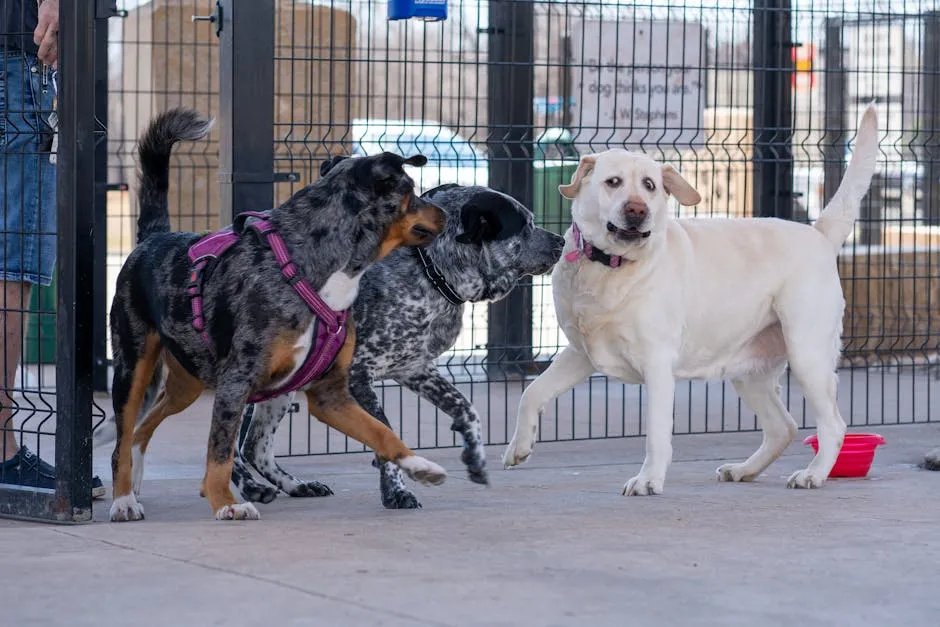
To support their socialization, consider using a Dog Training Clicker. This tool can help reinforce positive behaviors and make training a fun experience for your puppy!
Signs of Resource Guarding
Obvious Signs
Resource guarding can exhibit itself in various ways, some of which are quite apparent. Dogs often make it clear when they feel protective over their possessions. Growling is a classic sign. If your dog growls when you approach their food bowl, it’s a red flag. Snapping is another clear indicator—this is your dog saying, “Back off!”
Body posture also plays a crucial role. Stiff body posture indicates tension, signaling to you that your dog is on guard. Avoidance behavior can be telling too. If your dog moves away or hides their toy when someone approaches, it’s a sign they’re feeling possessive.
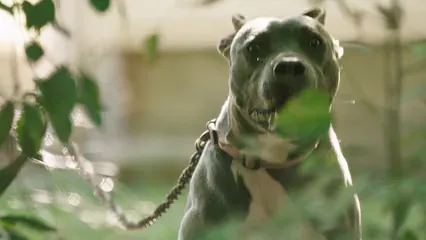
Subtle Signs
Not all signs of resource guarding are blatant; many are more subtle. Freezing is one such indicator. If your dog suddenly becomes still when someone approaches, they might be guarding something. Lip licking and avoiding eye contact are also cues to watch for. These behaviors can indicate stress or uncertainty, which often accompany guarding instincts.
Additionally, look for changes in facial expression. A tense face, wide eyes, or visible whites of the eyes can signal anxiety about their resources. Keeping an eye on these subtle signs can help you address potential issues before they escalate. Recognizing these cues early can lead to effective interventions and a happier, more relaxed dog.
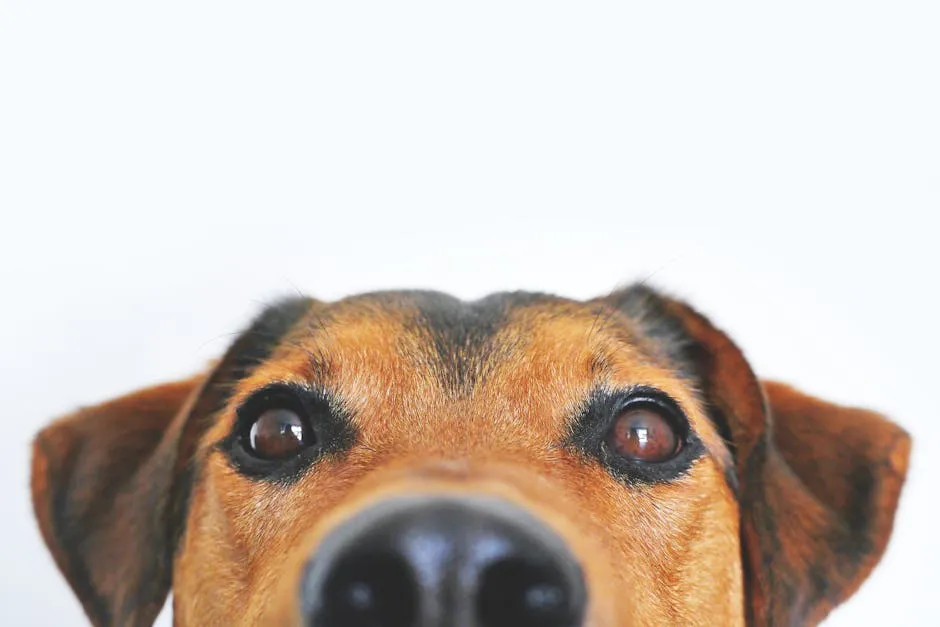
Understanding and Managing Resource Guarding Behaviors
What NOT to Do
Avoid Punishment
First and foremost, never punish your dog for growling or snapping. Punishment can backfire spectacularly. Imagine being warned about a potential threat and getting scolded for it instead! Growling is your dog’s way of saying, “Hey, I’m uncomfortable!” If you punish them, they may feel compelled to skip the warning and go straight to biting. This escalates the situation and can lead to dangerous outcomes. Remember, growling is just a warning sign, not an invitation for a showdown.
Don’t Remove Items Forcefully
Taking items away from your dog is like waving a red flag in front of a bull. It’s risky! When you forcefully take something, you may reinforce the guarding behavior. Your dog learns that their possessions are under threat, which can make them even more defensive. Instead of becoming a resource bandit, create a safe space where your dog can enjoy their belongings without feeling the need to protect them from a perceived “thief.”
Avoid Provoking Guarding Behaviors
Put yourself in your dog’s shoes—or paws, rather. If someone approached you while you were enjoying a snack, you’d probably feel uneasy, right? The same goes for dogs. Avoid placing them in situations that might trigger guarding instincts. Instead of tossing toys into their space or approaching them while they eat, give them the respect they deserve. Let them enjoy their treasures without added stress.
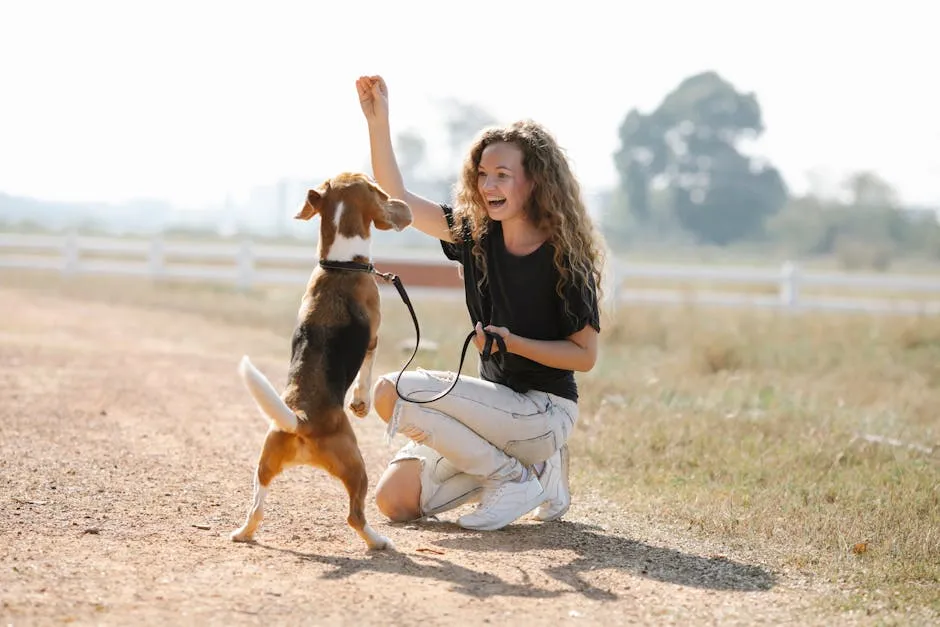
Training Strategies to Manage Resource Guarding
Positive Reinforcement Techniques
Positive reinforcement is your secret weapon! Use treats to create positive associations with your presence near guarded items. Imagine your dog munching on their dinner, and suddenly, you drop a few tasty treats nearby. This teaches your dog that your approach means good things come their way. Over time, they’ll look forward to you being near their food bowl or favorite toy, instead of bracing for an invasion.
Start by slowly approaching while they eat or play. Drop a treat and step back. Repeat this, gradually getting closer. This process helps your dog connect your presence with treats, making them less likely to guard their goodies. Remember, slow and steady wins the race!
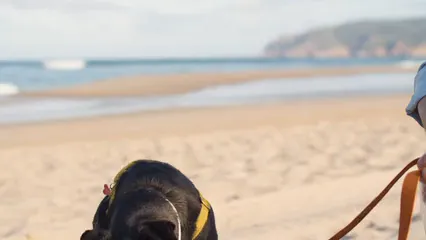
Trade-Up Methods
Trading up is a game-changer for managing resource guarding. This technique involves teaching your dog to give up an item in exchange for something they value even more. For instance, if your dog has a prized toy, grab a high-value treat—something irresistible! Show them the treat and encourage them to drop the toy. When they comply, reward them with the treat and then return their original item shortly after. This reinforces the idea that giving up an item can lead to even better things.
Start with low-stakes items, then gradually work up to those they guard more fiercely. This strategy not only helps reduce guarding behavior but also strengthens your bond with your furry friend. It’s a win-win!
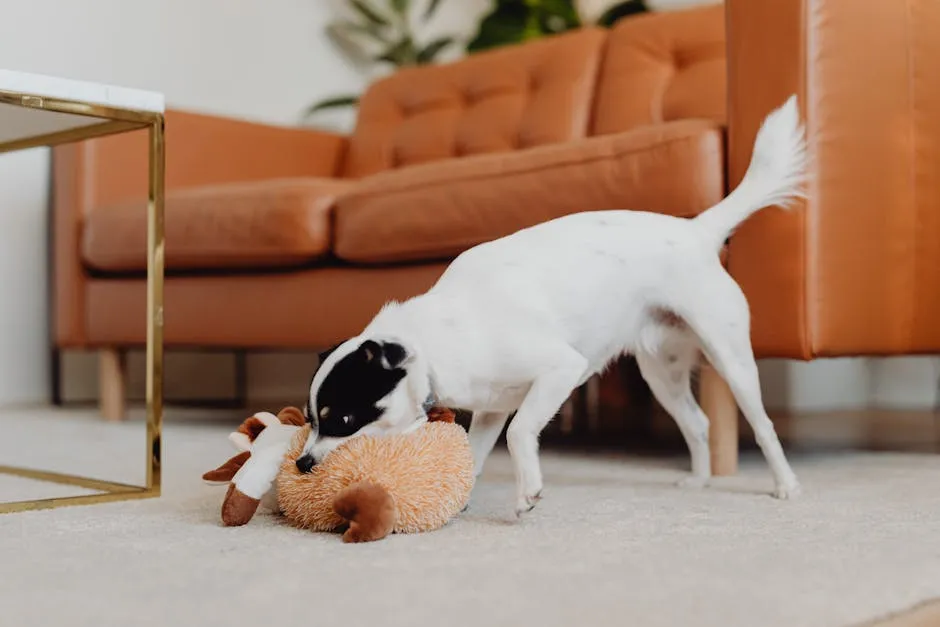
Desensitization and Counterconditioning
Desensitization and counterconditioning are fancy terms for changing your dog’s emotional response to their guarded items. Start by identifying what triggers their guarding behavior. Is it a specific person, pet, or situation? Once identified, you can control the environment to help them feel safe.
For example, if your dog guards their food from another pet, feed them in a separate area. As they eat, have a friend drop treats nearby. This teaches your dog that the presence of others results in positive experiences rather than threats. By gradually exposing them to the triggers while rewarding calm behavior, you can shift their perception. They’ll begin to understand that sharing space around their resources is safe and rewarding.
To enhance your training, consider adding a Dog Training DVD to your resources. These can provide valuable visual guidance and techniques to implement at home.
Throughout this process, patience is key. It may take time for your dog to adjust to these new associations. But with consistent practice, you’ll foster a more peaceful atmosphere at home, allowing your dog to enjoy their resources without the urge to guard.
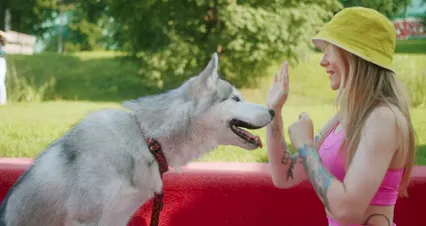
Seeking Professional Help
Resource guarding can sometimes feel like you’re navigating a minefield with your furry friend. If your dog’s guarding behavior escalates to snapping or biting, it’s time to consider professional help. A certified dog trainer or behaviorist can provide tailored advice suited to your pup’s unique needs.
So when should you wave the white flag and seek professional assistance? If your dog shows extreme aggression when guarding food, toys, or even you, it’s crucial not to tackle this alone. These behaviors can pose serious risks, especially in households with children or other pets.
A professional can assess your dog’s specific situation and recommend effective strategies. They can guide you through desensitization training and teach you how to create a safe environment for both your dog and those around them. Remember, the goal is to ensure everyone feels secure and happy.
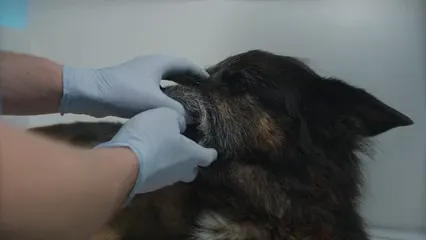
In the meantime, having a Pet First Aid Kit on hand is a wise choice. You never know when a minor emergency might arise, and being prepared can make all the difference!
Preventing Resource Guarding
Early Intervention Strategies
Prevention is the golden ticket when it comes to resource guarding. Teaching puppies that sharing is caring can set them up for a lifetime of good behavior. Start early by associating human interactions with positive experiences.
When your puppy eats or plays, drop treats near them. This teaches them that your presence means more goodies. Imagine their joy when they realize that sharing space during mealtime is a cause for celebration, not anxiety. This simple act can help reduce the likelihood of guarding behaviors later on.
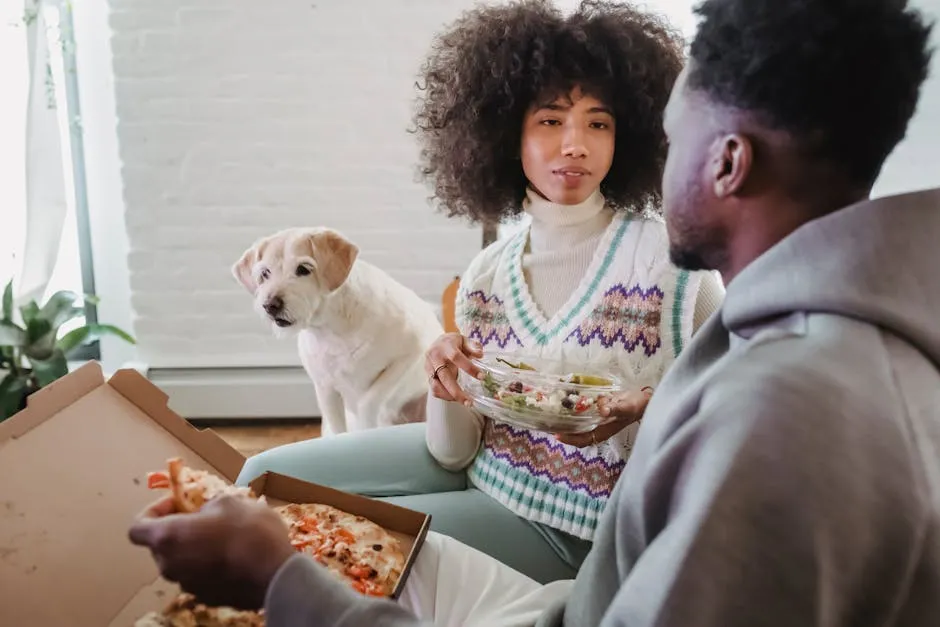
Creating a Safe Environment
Setting the stage for success involves crafting a safe environment for your furry friend. Start by designating separate feeding areas for multiple pets. This reduces competition and anxiety, allowing each dog to enjoy their meal without the pressure of potential conflict.
Consider creating a cozy, quiet space where your dog can retreat during mealtime or playtime. This sanctuary will help them feel secure and less inclined to guard their belongings.
Additionally, manage access to high-value items. If your dog has a favorite toy, consider rotating it out of sight. Reintroduce it occasionally to keep things fresh and exciting, minimizing the urge to guard it fiercely.
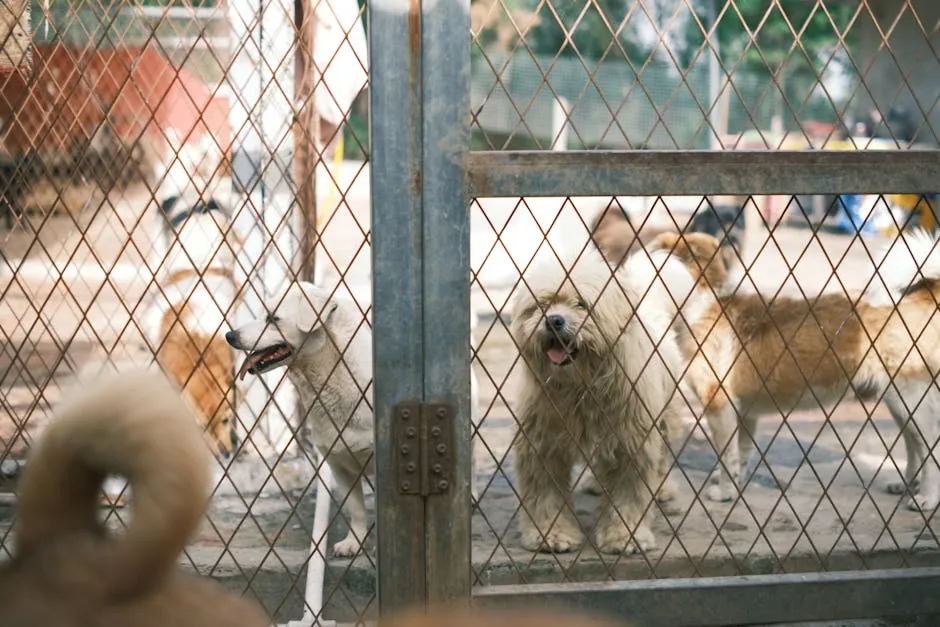
For added comfort, a Dog Bed with Removable Cover can provide a safe haven for your pup, making them feel secure and less likely to guard their resting spots.
Lastly, supervision is key! Keep an eye on your dog during high-stress situations. If conflicts arise, step in gently and redirect their attention. With consistent management and a supportive environment, you can help your dog feel more relaxed and less inclined to guard their resources.
FAQs
What are the common triggers for resource guarding?
Resource guarding can be triggered by various factors. Common triggers include: – **Food-related triggers:** These often involve food bowls, treats, or bones. Dogs may feel threatened when approached during mealtime. – **Toys:** Dogs can become defensive when someone approaches their favorite toys. This behavior emphasizes their desire to maintain ownership of enjoyable items. – **Personal space:** Dogs might guard their resting spots or favorite areas in the home. This is especially true in multi-pet households where competition can arise. Understanding these triggers is crucial for preventing and addressing guarding behavior effectively.
Can all dogs exhibit resource guarding?
Not all dogs will exhibit severe resource guarding behaviors. While many dogs may show some level of guarding, the intensity varies widely. Some breeds may have a stronger tendency to guard than others. For instance, breeds such as Rottweilers and German Shepherds are often more prone to this behavior. However, with proper training, socialization, and positive reinforcement, most dogs can learn to manage their guarding instincts.
How can I tell if my dog is resource guarding?
Several signs indicate that your dog may be resource guarding. Look for both obvious and subtle behaviors, including: – **Obvious signs:** Growling, snapping, or lunging when someone approaches their food or toys are clear indicators. – **Subtle signs:** Be aware of body language cues such as stiff posture, lip licking, or avoiding eye contact. If your dog moves away or hides their possessions when someone approaches, it may signal guarding behavior. By recognizing these signs early, you can address potential issues before they escalate.
Is resource guarding dangerous?
Resource guarding can pose risks, especially in homes with children or other pets. A dog that feels threatened may react defensively, leading to potential bites or altercations. Conflicts can arise when multiple pets are vying for the same resources, creating tension in the household. It’s essential to manage these behaviors to ensure a safe environment for all family members.
What should I do if my dog bites while guarding?
If your dog bites while guarding, it’s crucial to remain calm and assess the situation. First and foremost, avoid punishing your dog, as this can escalate the problem. Instead, seek immediate professional help from a certified trainer or behaviorist. They can provide guidance on how to manage the behavior safely. In the meantime, ensure your dog is in a controlled environment to prevent further incidents, and consider implementing management techniques to reduce triggers. Prioritizing safety for both your dog and those around them is essential as you work to address this behavior.
Please let us know what you think about our content by leaving a comment down below!
Thank you for reading till here 🙂
For additional insights on managing dog anxiety, check out this article on natural remedies for dog anxiety during thunderstorms.
If you’re considering adopting a rescue dog with anxiety, you may find valuable dog training tips in this post: Dog training tips for adopting a rescue dog with anxiety.
All images from Pexels

